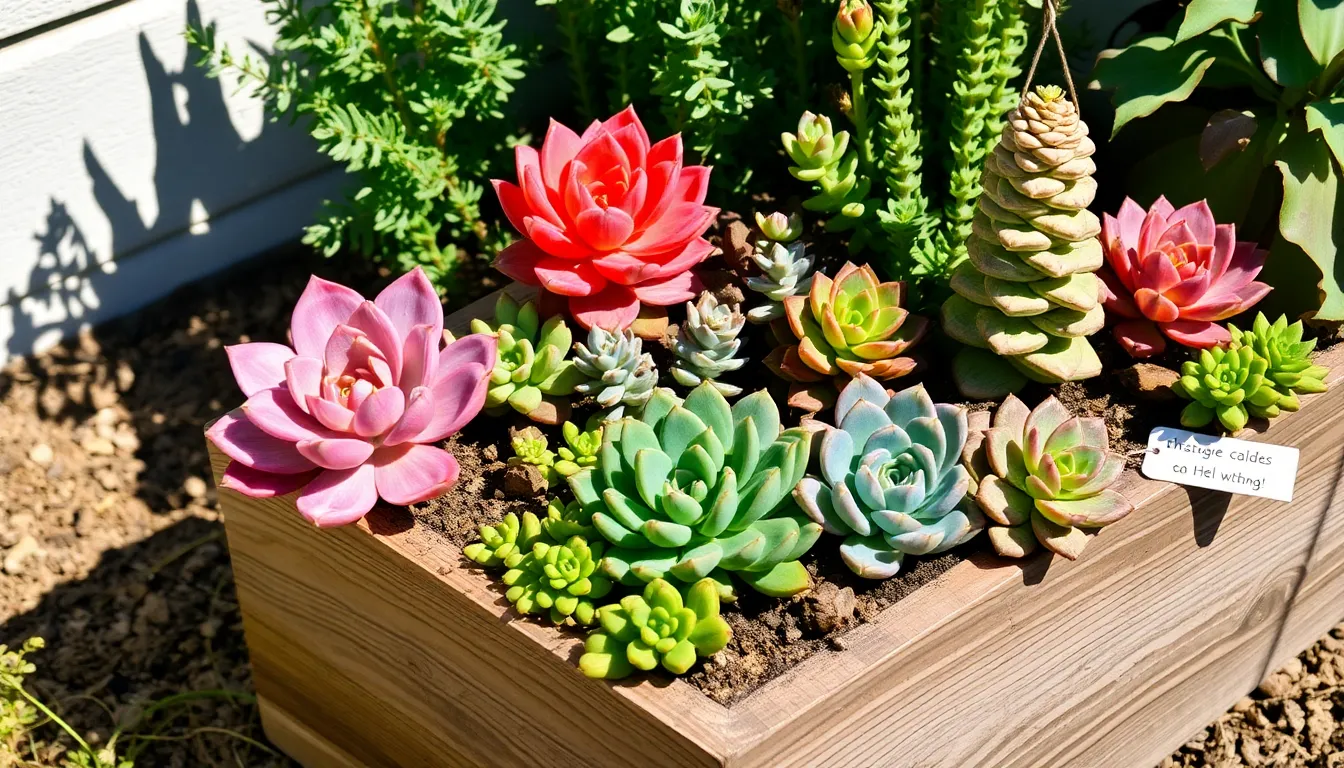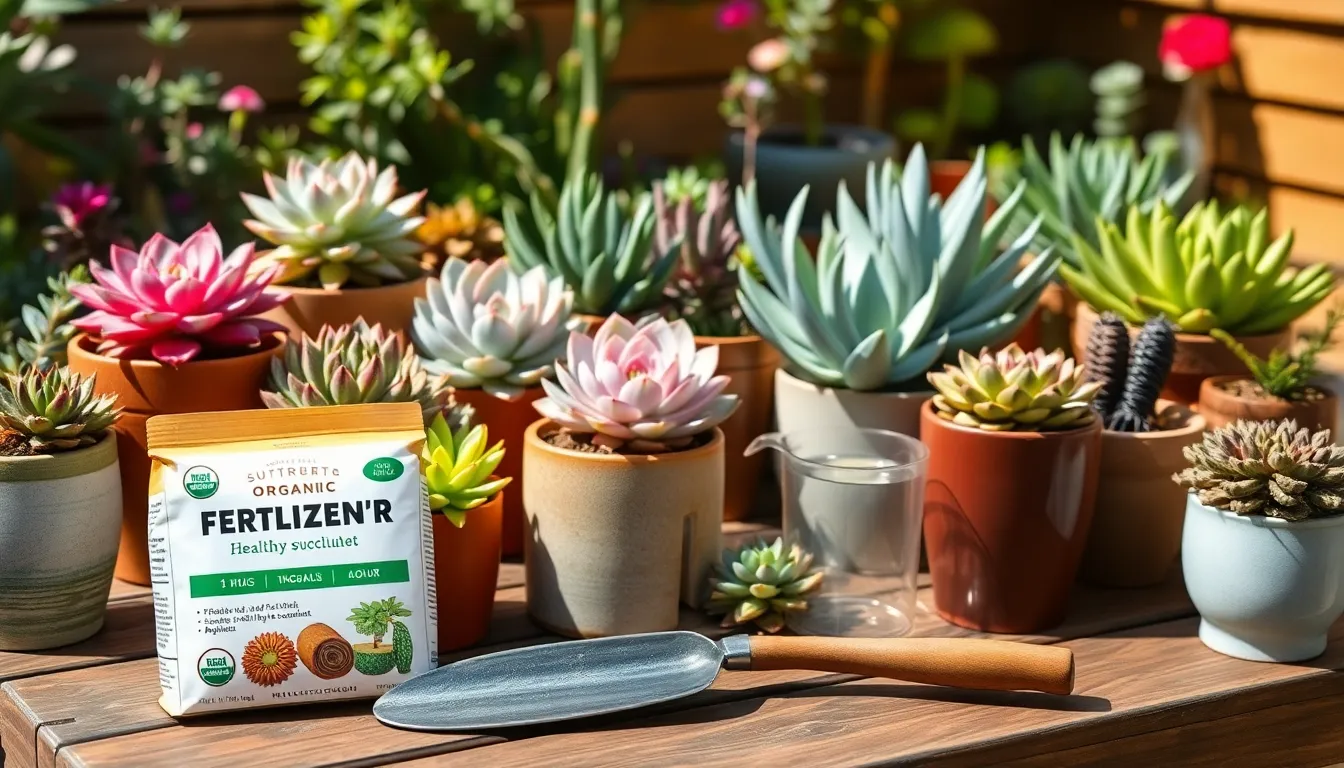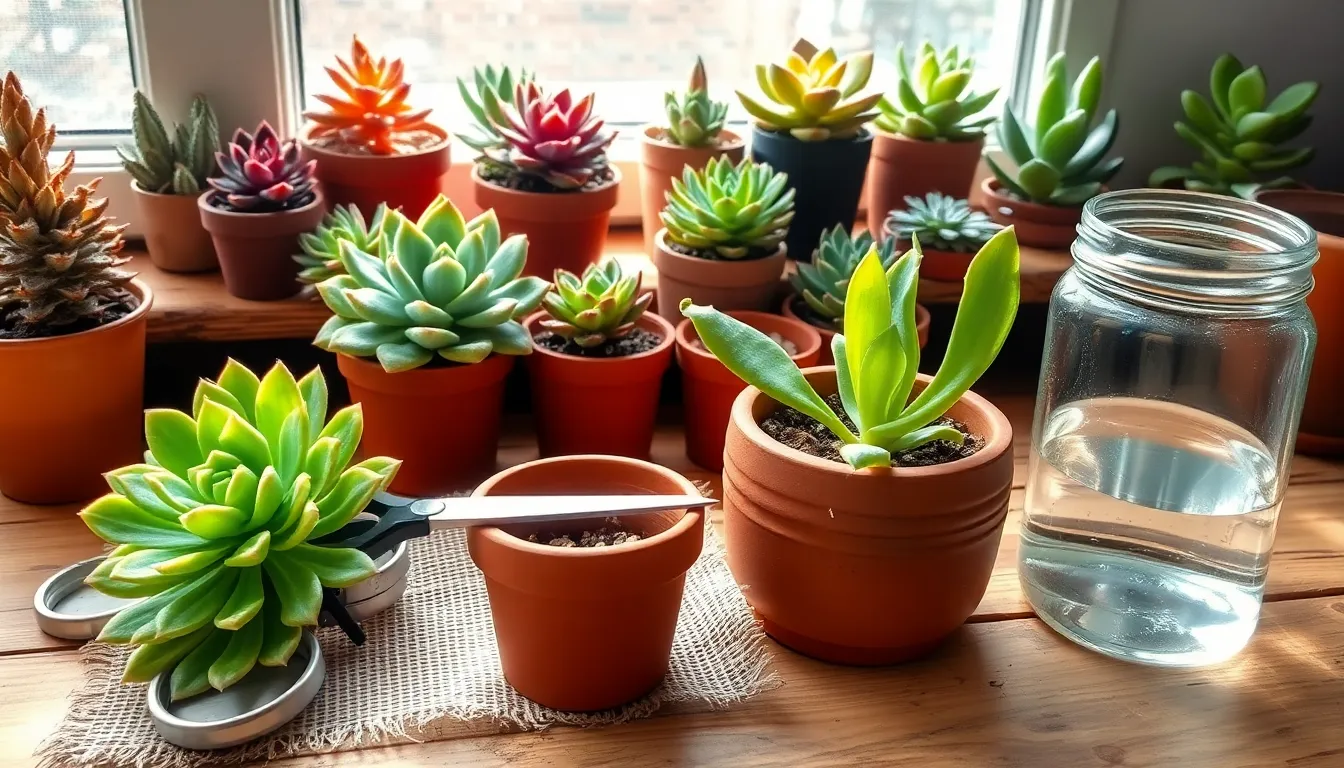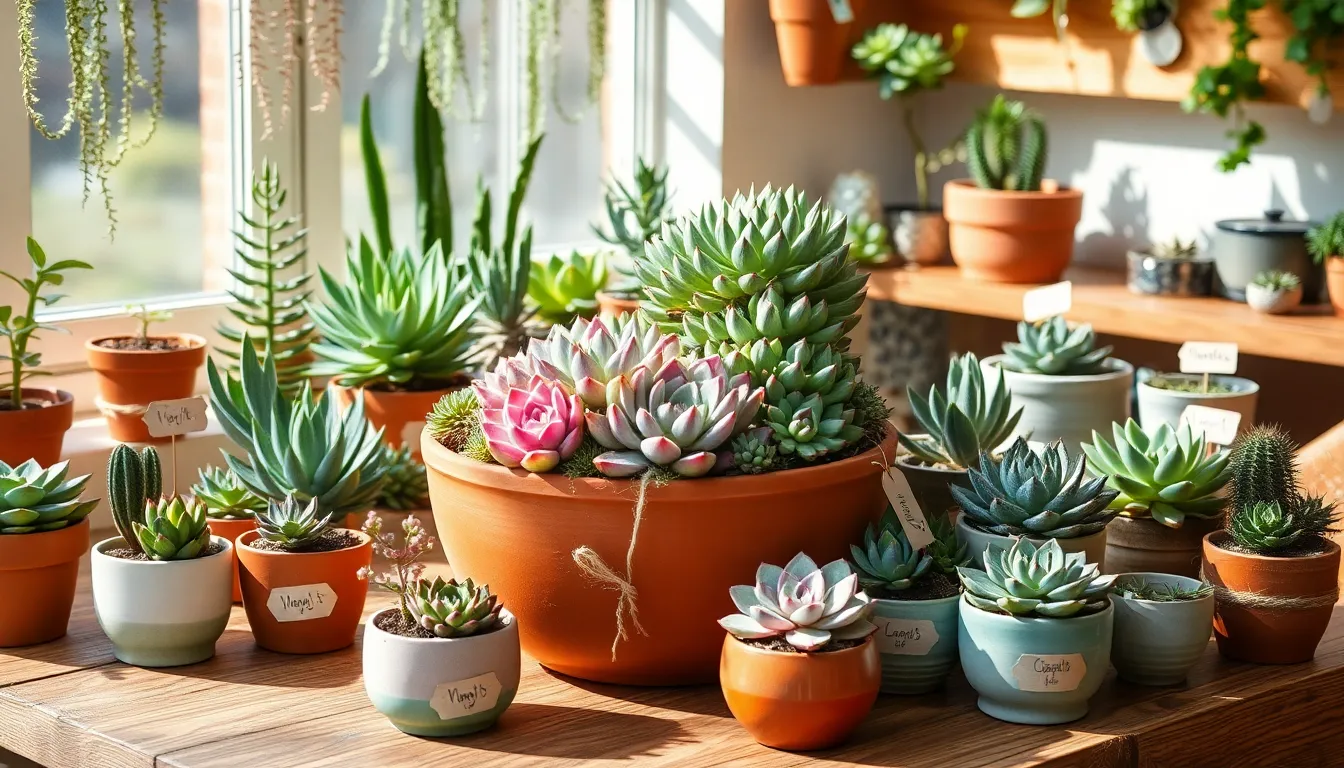In the enchanting world of gardening, few things spark as much joy and curiosity as discovering rare plants that are both beautiful and easy to care for. For both seasoned horticulturists and those just beginning their green-thumb journey, rare succulents stand out as unique treasures that can transform any space into a captivating oasis. These exceptional plants, with their diverse forms and vibrant colors, offer a touch of the extraordinary while being surprisingly manageable to cultivate.
Delving into the realm of rare succulents, you’ll find that these fascinating plants not only add aesthetic value but also bring a sense of accomplishment. Whether your gardening experience is measured in years or you’ve just planted your first seed, there’s a succulent on this list that will fit perfectly into your gardening repertoire. In this article, you’ll uncover six rare succulents that defy their exotic appearances and prove to be remarkably resilient, making them perfect candidates for your next botanical adventure.
As we explore these intriguing plants, you’ll gain insights into their unique care requirements, ensuring that your foray into rare succulents is both rewarding and stress-free. From tips on sunlight and watering to the best soil types and propagation techniques, this guide equips you with the knowledge to grow these rare beauties successfully. Prepare to be inspired and empowered, as you learn how to nurture these extraordinary succulents and elevate your gardening experience to new heights.
Discovering Unique Succulent Varieties
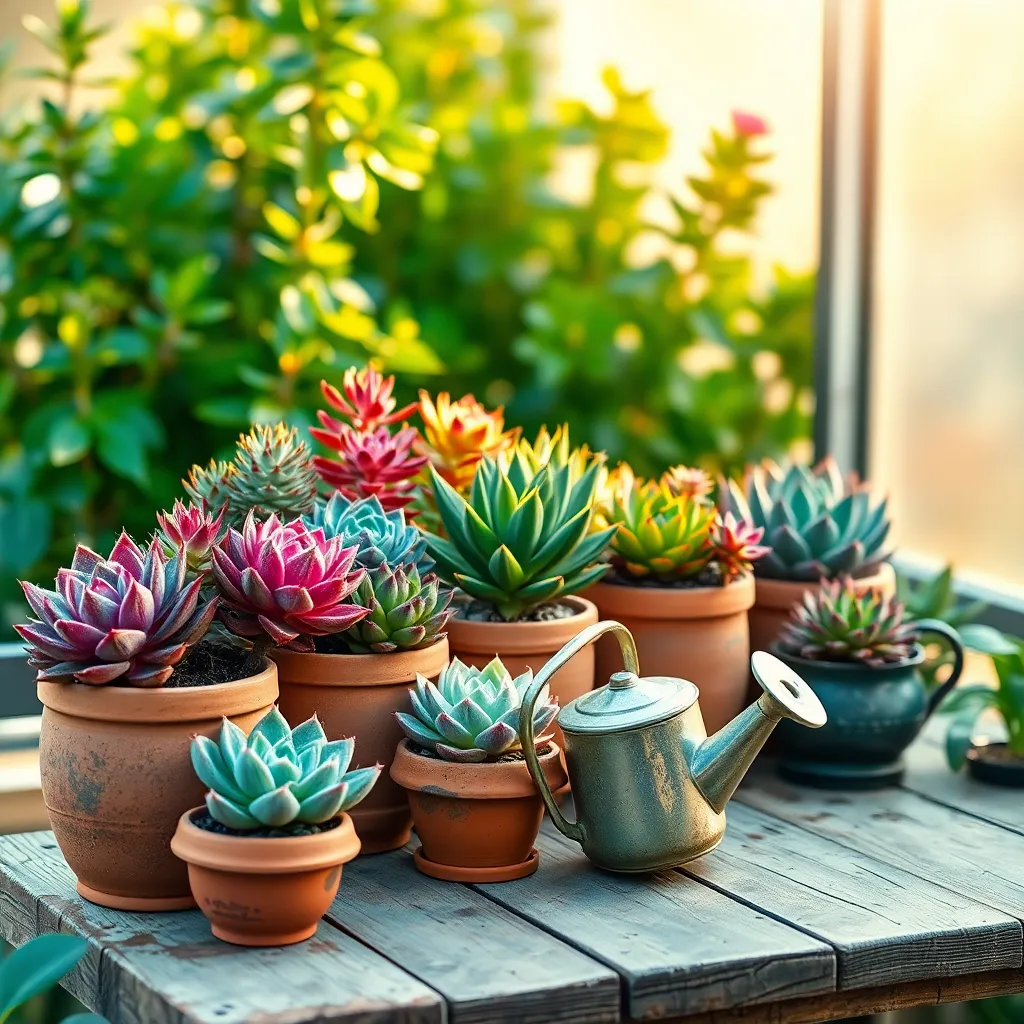
When it comes to discovering unique succulent varieties, the Lithops, commonly known as “living stones,” can be a great starting point. These intriguing succulents mimic the appearance of small stones, making them a fascinating addition to any collection.
To successfully grow Lithops, provide them with well-draining soil, such as a cactus mix, and place them in a spot with bright, indirect light. Water sparingly, particularly during their dormant period, allowing the soil to dry out completely between waterings to prevent root rot.
Another exciting option is the Haworthia cooperi, known for its translucent, jelly-like leaves. This succulent thrives in a mixture of indirect sunlight and partial shade, making it ideal for indoor settings.
Water your Haworthia cooperi thoroughly when the soil feels dry to the touch, but be cautious not to overwater. For best results, use a pot with drainage holes and a sandy, well-draining soil mix.
The Crassula ‘Buddha’s Temple’ is a visually striking choice with its stacked, square-shaped leaves. This succulent prefers a sunny position and is quite tolerant of drought conditions, making it relatively simple to care for.
Ensure its soil is allowed to dry out between watering sessions, and consider using a mix specifically designed for succulents and cacti. For optimal growth, fertilize sparingly during the growing season with a balanced, diluted liquid fertilizer.
Ideal Conditions for Rare Succulents
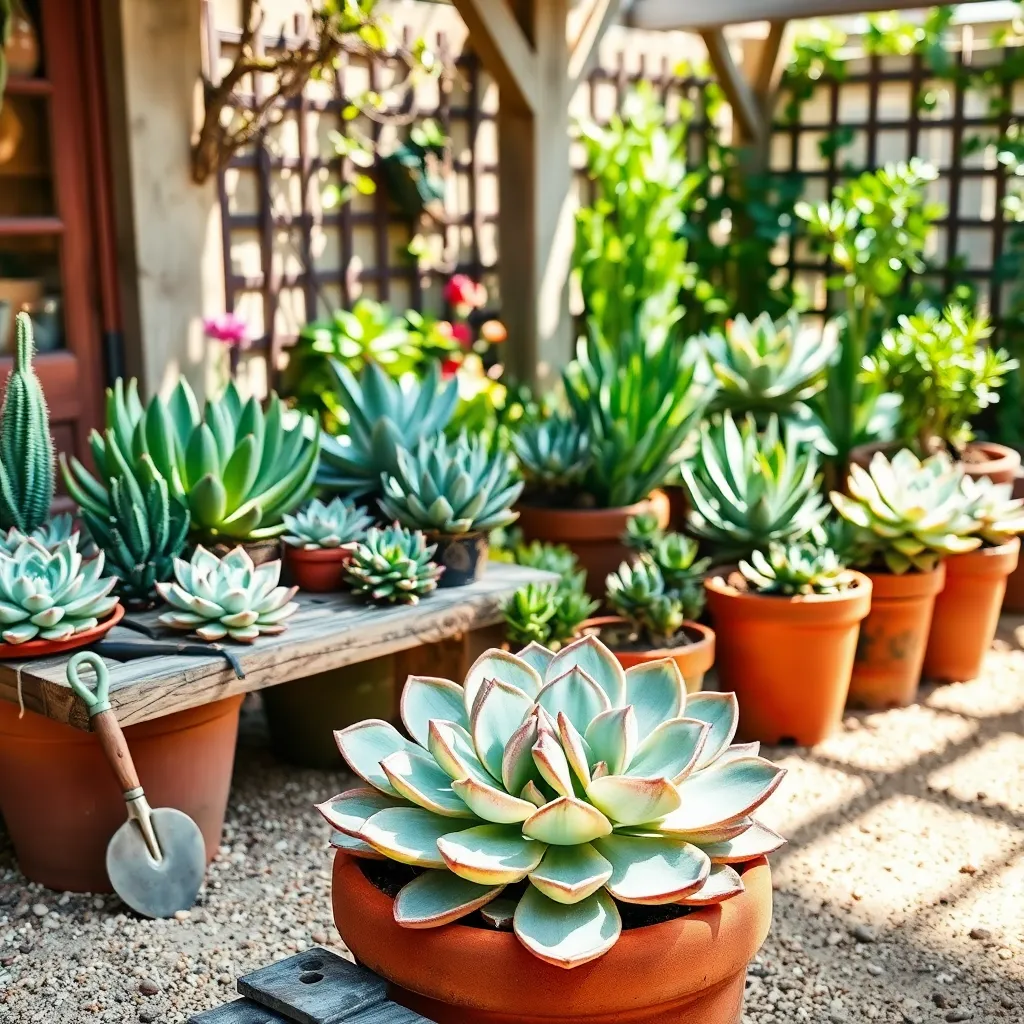
Rare succulents often thrive in conditions that closely mimic their natural habitats. Ensuring they receive bright, indirect sunlight is crucial, as direct sunlight can scorch their leaves.
Use a well-draining soil mix specifically designed for succulents and cacti. This helps prevent root rot by allowing excess water to flow through, keeping the roots dry and healthy.
Water these unique plants sparingly, allowing the soil to dry out completely between waterings. Typically, watering every 2-3 weeks is adequate, but this can vary based on humidity and season.
For beginners, a terra cotta pot is recommended, as it naturally wicks away moisture, aiding in proper drainage. Advanced gardeners might experiment with soil amendments like pumice or perlite to further enhance drainage.
Temperature regulation is key for rare succulents, with most preferring a range between 60-80°F (15-27°C). Protect them from frost by bringing them indoors or providing cover during colder months.
Fertilizing with a dilute, balanced fertilizer during the growing season can encourage healthy growth. However, avoid over-fertilizing, as this can lead to leggy growth and weaken the plant.
Soil Mix for Easy Growth
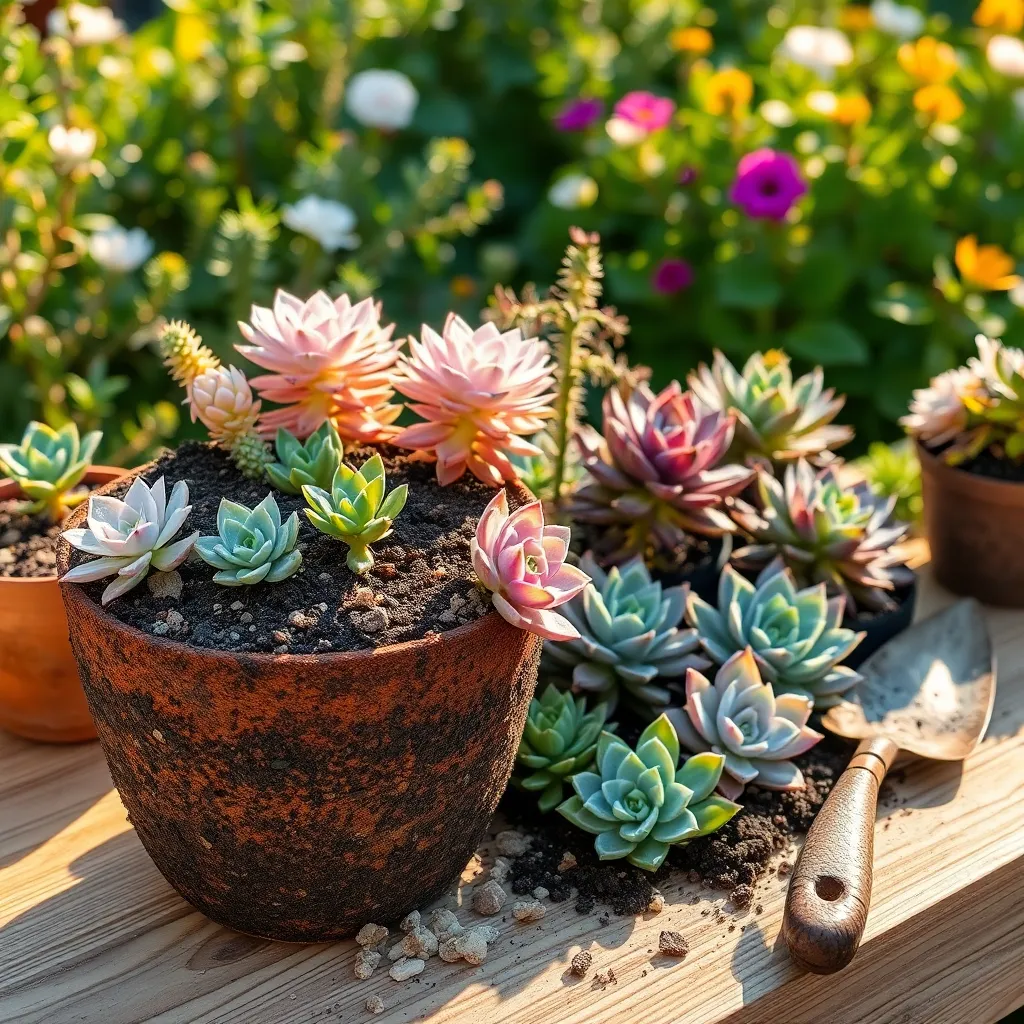
When it comes to growing rare succulents, the right soil mix is crucial for their success. Succulents prefer a well-draining soil that prevents root rot, which is a common issue caused by waterlogged conditions.
An ideal soil mix for these plants often includes a combination of potting soil, perlite, and coarse sand. The potting soil provides nutrients, while the perlite and sand improve drainage and aeration, ensuring the roots have enough oxygen.
For beginners, a simple recipe is to mix two parts potting soil with one part perlite and one part sand. This blend creates a balanced environment that supports healthy growth and minimizes the risk of overwatering.
Advanced gardeners may consider adding crushed lava rock or pumice to the mix for additional drainage. These materials help simulate the natural habitats of succulents, which are often rocky and arid.
To further enhance growth, it’s beneficial to use a cactus-specific potting mix available at most garden centers. These mixes are specially formulated to meet the unique needs of succulent plants, providing an ideal base for both novice and experienced gardeners.
Mastering the Art of Watering
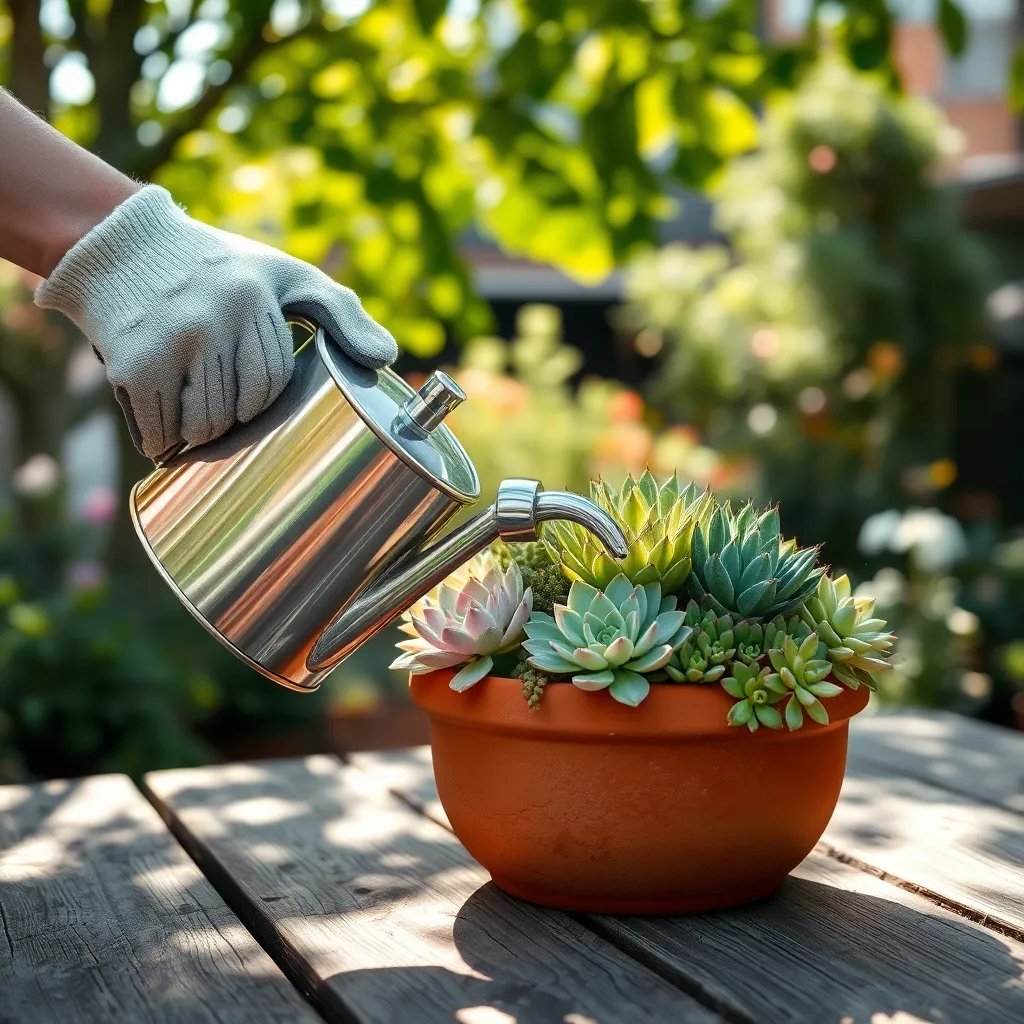
Watering is a critical aspect of succulent care, and it’s essential to get it right for the health of your plants. Succulents store water in their leaves, so they require less frequent watering compared to other plants. Always allow the soil to dry out completely between waterings to prevent root rot. This means that during the growing season, you may only need to water them once every two weeks.
To determine if it’s time to water, stick your finger an inch into the soil; if it’s dry, it’s time to water. A moisture meter can also be a handy tool for more precise monitoring, especially if you’re new to succulent care. When watering, soak the soil thoroughly, allowing excess water to drain out of the pot’s holes. Avoid letting the plant sit in standing water, as this can lead to root rot.
Remember, it’s better to underwater than overwater with succulents. In winter, reduce watering even further, as many succulents enter a dormant phase and require minimal water. If you’re growing succulents indoors, be mindful of the humidity levels; lower humidity environments are ideal for these plants. For more experienced gardeners, consider experimenting with a bottom-watering technique, which can help ensure that the roots receive sufficient moisture.
Light Requirements for Optimal Health
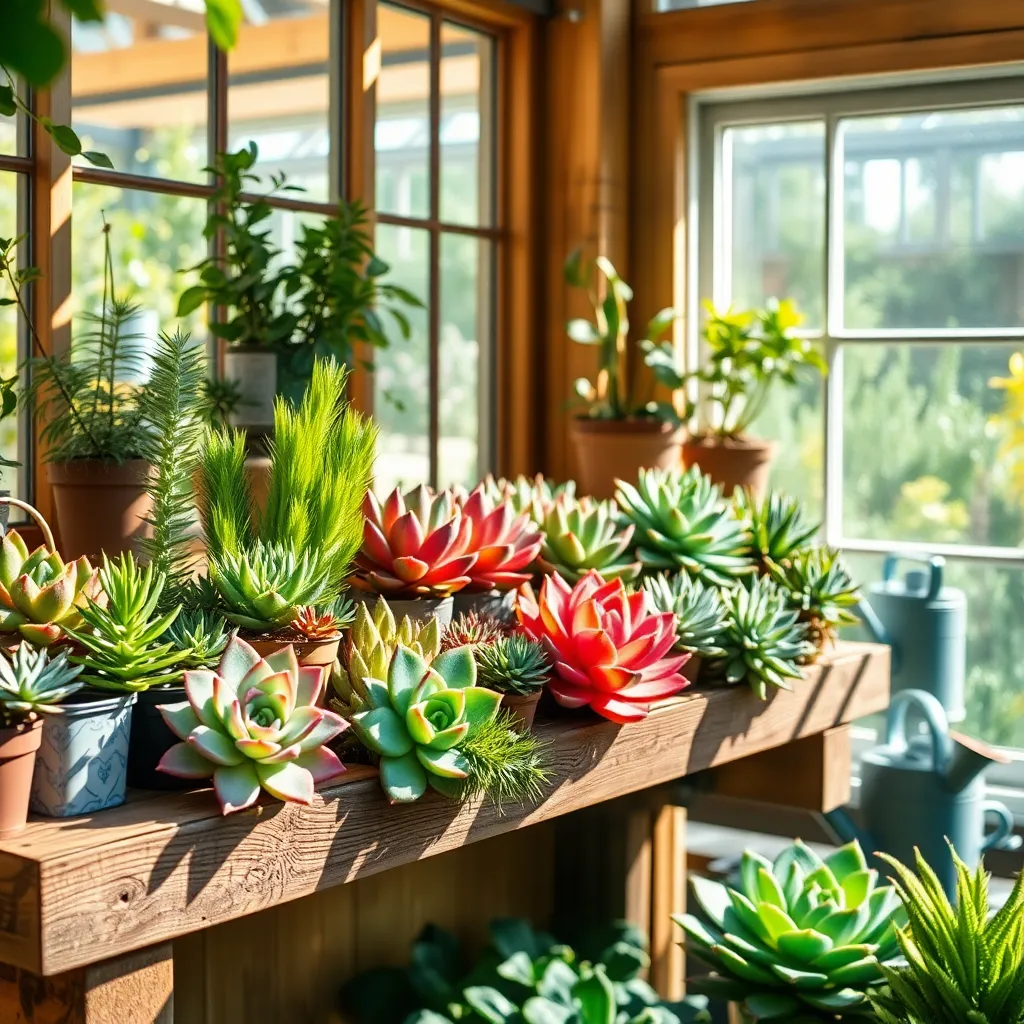
Ensuring your rare succulents receive the right amount of light is crucial for their growth and health. Most succulents thrive in bright, indirect sunlight, which helps maintain their vibrant colors and compact form.
Place your succulents near a south or east-facing window where they can bask in the morning sun without getting scorched. If natural light is limited, consider using a grow light that mimics the sun’s spectrum, ensuring your plants get about 6 hours of light daily.
For beginners, it’s important to observe how your succulent responds to its light environment. If you notice the plant stretching or losing color, it’s likely not getting enough light and should be moved to a brighter location.
Advanced growers can experiment with rotating their succulents every few weeks. This practice ensures even light exposure and promotes balanced growth, preventing the plant from leaning toward the light source.
Succulents like Haworthia and Gasteria can tolerate lower light conditions better than others, making them ideal for indoor settings. However, even these varieties will benefit from some direct sunlight to enhance their growth and overall health.
Propagation Tips for Rare Succulents
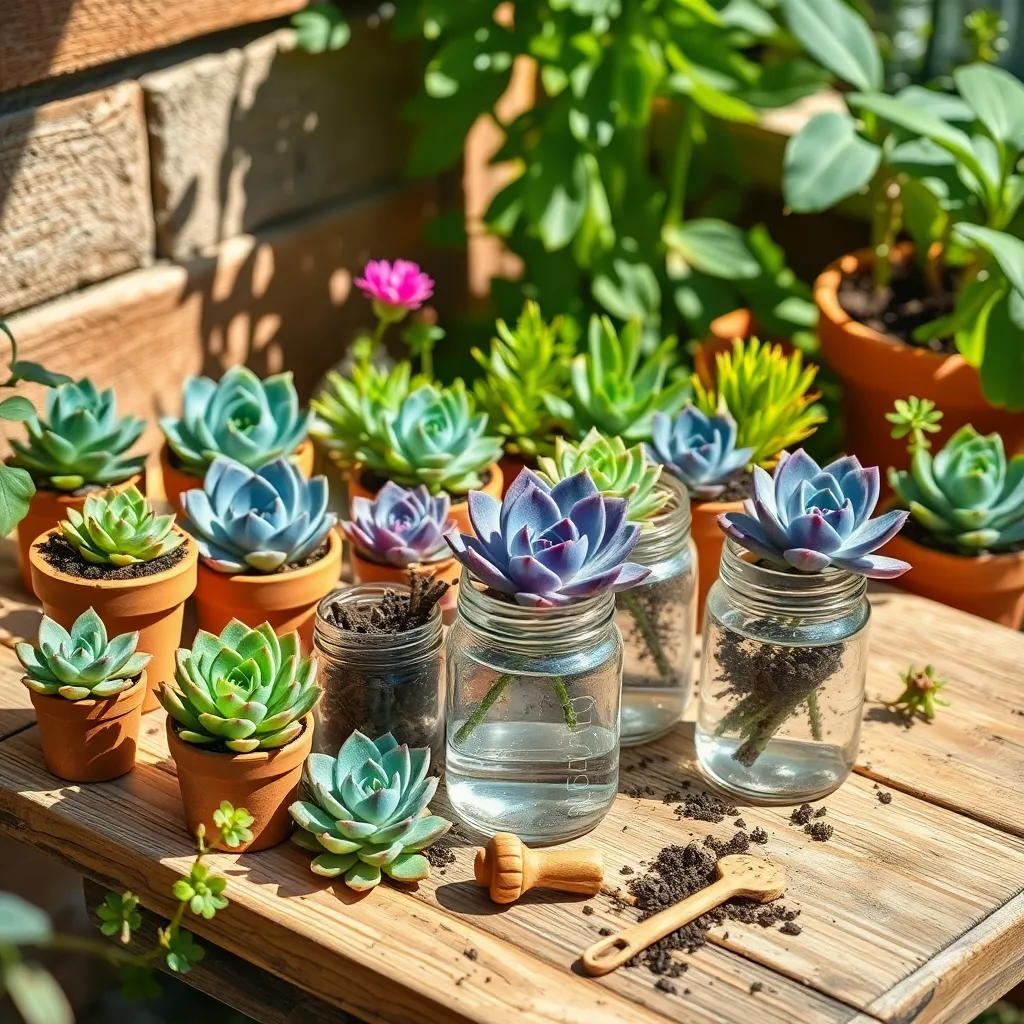
Propagating rare succulents can be both a rewarding and straightforward process with the right approach. Start by selecting a healthy parent plant, as this will increase your success rate and ensure robust new growth.
When it comes to soil, using a well-draining mix is crucial. A cactus or succulent potting mix is ideal, but you can also create your own by combining equal parts sand, perlite, and regular potting soil.
For beginners, leaf cuttings are a simple way to propagate many succulents. Gently twist a leaf from the stem, ensuring that you get the entire base, and let it callous over for a few days before placing it on the soil surface.
Advanced gardeners might explore stem cuttings, which can be more effective for certain types of succulents like the rare ‘String of Pearls’. Cut a healthy stem, remove a few lower leaves, and allow it to callous before planting it in a well-draining medium.
Watering is another critical aspect; succulents prefer to dry out between waterings. After planting cuttings, wait until the soil is dry to water lightly, encouraging roots to seek moisture and establish themselves.
Monitoring light levels is essential for newly propagated succulents. Keep them in a bright, indirect light location to promote growth without risking sunburn, gradually acclimating them to more direct sunlight as they grow stronger.
Conclusion: Growing Success with These Plants
In exploring the world of rare succulents that are surprisingly easy to grow, we’ve uncovered six key insights into nurturing relationships: the importance of patience, resilience, adaptability, balance, appreciation of uniqueness, and consistent care. Each succulent teaches us vital lessons — from the patience needed to see growth, to the resilience required to thrive in various conditions, and the adaptability that keeps relationships flourishing despite challenges.
As your immediate next step, consider choosing one of these succulent-inspired principles to focus on in your relationships this week. For instance, practice patience by actively listening to your partner, or celebrate their unique qualities with genuine appreciation.
Don’t let these valuable insights fade away; save or bookmark this article now to revisit each principle and continually nourish your relationships. By doing so, you’re not just collecting information but cultivating a garden of knowledge that will help your connections blossom over time.
Remember, relationship success is not about grand gestures but the consistent, thoughtful actions you take every day. Embrace these lessons, and watch as your relationships grow more vibrant and resilient with each passing day.

